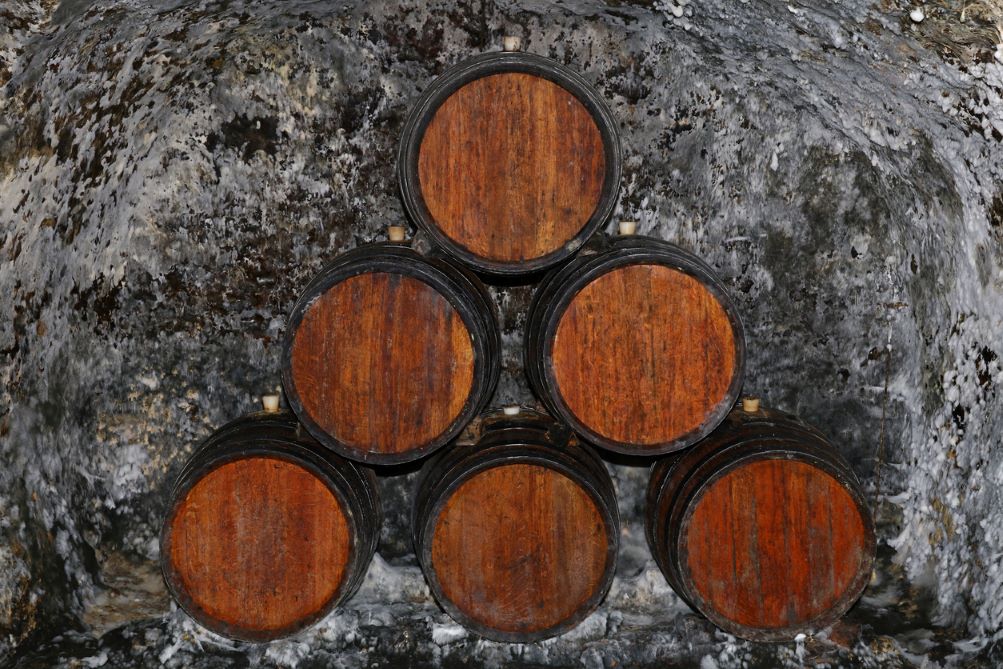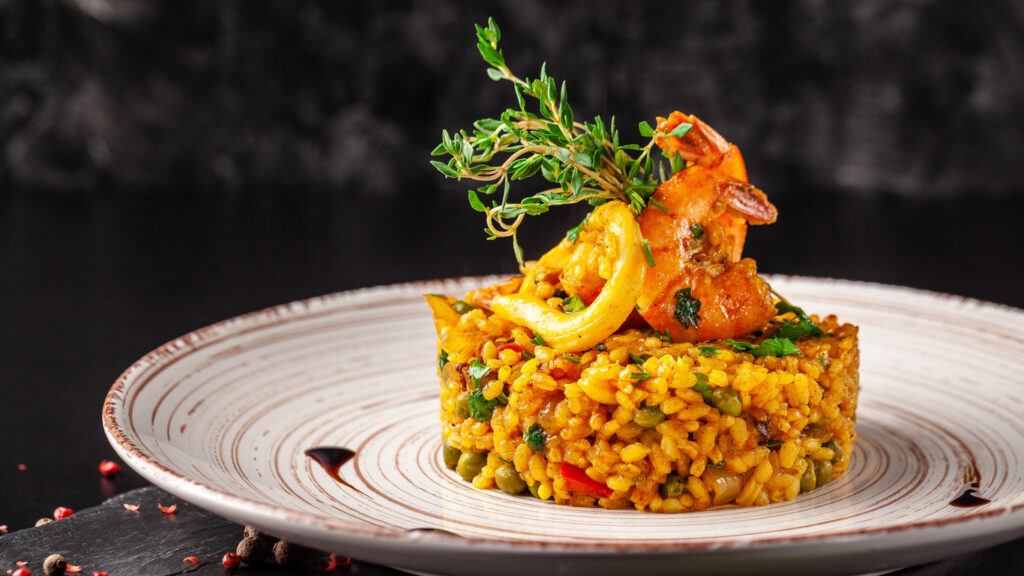Nestled in the rolling hills of Hungary, the Tokaj Wine Region is a hidden gem waiting to be discovered by oenophiles around the world. Renowned for its production of sweet, golden wines, this area has a rich history that dates back centuries. The unique microclimate and terroir of Tokaj create the perfect conditions for botrytized grapes to thrive, resulting in lusciously sweet and complex wines that are unparalleled in their flavor profile.
The Story of Tokaji Wine
The world of wine is vast and full of unique sweet wines and hidden gems waiting to be discovered. One such gem is Tokaj Wine, a Hungarian delight that has been captivating wine tasting enthusiasts for centuries. Known for its golden hue and luscious flavor profile, Tokaj Wine is made from grapes nurtured in the unique terroir of the Tokaj wine region.
Botrytis Cinerea
What sets Tokaj Wine apart is its noble rot, also known as Botrytis cinerea. This beneficial fungus infests the grapes and causes them to shrivel, concentrating their sugars and flavors. It might not sound particularly appealing, but this noble rot adds complexity and richness to the resulting wine. As a result, Tokaj Wines are renowned for their intense aroma of honeyed apricots and oranges, with subtle hints of spice and vanilla.

Puttonyos
Unlike many other wines that are categorized by grape variety or region, Tokaj Wine is classified based on levels of sweetness called puttonyos. Puttonyos range from 3 to 6 depending on the concentration of botrytized grapes used during wine production. The higher the puttonyos level, the sweeter the wine becomes.

Tokaj Wine’s history can be traced back to at least the 16th century when it gained fame as the wine of kings. It was even renowned as a favorite among notable figures such as Louis XIV, Catherine II of Russia, and Thomas Jefferson himself!
What kind of grapes are used for Tokaj wine?
Tokaj wine, known for its rich golden color and luscious sweetness, is made from a unique combination of grapes. The primary grape used to craft this Hungarian treasure is Furmint, a white grape variety that accounts for the majority of the blend. This grape brings high acidity and vibrant flavors of apple, pear, and quince to the wine. But it doesn’t stop there; Tokaj also incorporates other indigenous grape varieties, such as Hárslevelű and Muscat Blanc à Petits Grains.

Hárslevelű, a local varietal meaning linden leaf, adds depth and complexity to Tokaj wines. Its smaller clusters result in intensely concentrated flavors of honeyed apricot, floral notes, and hints of spice. On the other hand, Muscat Blanc à Petits Grains contributes its characteristic aromatic qualities with fragrant aromas of orange blossom and jasmine. It lends a touch of fruity sweetness without compromising the overall balance of acidity in the final product.

Together, these grapes create an orchestra on your palate—a symphony blending acidity with sweet notes that resemble tropical fruits like pineapple and mango while retaining a refreshing crispness throughout.
How much sugar do Tokaj’s sweet wines contain?
When it comes to sweet wines, Tokaj wine is often celebrated as one of the finest in the world. Originating from the Tokaj wine region in Hungary, this amber-colored elixir has been cherished for centuries for its luscious sweetness and balanced acidity. But just how much sugar does Tokaji wine contain? The answer lies in its unique production method, known as aszu.

In the making of Tokaji wine, botrytized grapes are handpicked individually during late autumn or early winter. These grapes have been affected by a special type of mold called Botrytis cinerea, which concentrates their sugars and imparts complex flavors to the resulting wine. After gentle pressing, the extracted juice is then fermented with wild yeasts and aged in oak barrels for several years. This extended aging process not only enhances the character of the wine but also allows it to develop a higher sugar content than most other wines.

Due to this particular winemaking technique involving botrytis-affected grapes, Tokaji wines are typically high in residual sugar. Some bottles can contain anywhere between 60 grams to over 400 grams residual sugar per liter! This level of sweetness isn’t overpowering though; rather, it’s harmoniously balanced by refreshing acidity, creating an elegant dance on your palate that makes every sip irresistible.
What’s special about the climate and soil of Tokaj?
The Tokaj Wine Region is a historical wine region renowned for its unique terroir, which gives rise to exquisite wines like no other. Situated in northeastern Hungary, this small corner of the world possesses a microclimate that fosters the perfect climatic conditions for the growth of botrytized grapes. The wine region’s volcanic soil and proximity to the Bodrog and Tisza rivers contribute to the ideal moisture levels necessary for noble rot, known as aszú in Hungarian, to develop on the Furmint and Hárslevelű grape varieties.

For centuries, winemakers in the Tokaj Wine Region have mastered a precise winemaking technique called aszu-essenstya. This method involves painstakingly hand-picking individual botrytized grapes for sweet aszú wines and blending them with base wines to create highly concentrated nectar-like elixirs. These luscious sweet wines boast an exceptional balance of acidity and sweetness, with intricate layers of flavors ranging from apricot and honey to a hint of dried orange peel. As each vintage showcases varying degrees of aszú berries required for wine production here, every bottle offers an exclusive experience that encapsulates a specific year’s climate conditions.

Beyond its world-famous dessert wines, the Tokaj Wine Region has also diversified its offerings in recent years.
How is TOKAJI ASZÚ wine made?
The magic behind Tokaj Aszú wines lies in a beautiful symbiotic relationship between grapes and noble rot. Noble rot, scientifically known as botrytis cinerea, occurs when humidity combines with morning fog in late autumn. The noble rot affects only certain bunches of grapes left on the vine intentionally longer than others to concentrate their sugars further. Hand-picking each shriveled berry individually is an arduous task that requires utmost precision. This meticulous selection process guarantees only the finest grapes make it into these precious nectars.

Once harvested, the whole aszú grapes and berries are crushed into a paste known as aszú dough. This dough is then added to a base wine made from non-botrytized grapes called must or eszencia to start fermentation. Fermentation can take anywhere from several weeks to months until all sugar has been converted into alcohol—Tokaj Aszú typically boasts around 10-12% alcohol by volume (ABV).
Classification of Tokaj Aszu wines?
Aszu wine, a heavenly nectar crafted from noble rot-infected grapes, holds a special place in the world of viticulture. This Hungarian dessert wine is renowned for its luscious golden hue and rich complexities that dance on the palate. But what sets Aszu apart from other sweet wines is its unique classification system, which distinguishes it from sweet wine based on the number of puttonyos added during the winemaking process.

Puttonyo? Yes, puttonyos! Derived from the word putto, meaning barrel or container in Hungarian, puttonyos refers to a small basket traditionally used to measure out the amount of botrytis-affected grapes added to Aszu wine. Each puttonyo represents approximately 25 kilograms of these precious grapes, determining both the sweetness level and quality of wine tasting the final product. Ranging from three to six puttonyos (or sometimes even more), these classifications help consumers navigate through an exquisite spectrum of flavors and textures when choosing their desired bottle of Aszu.

Beyond mere sweetness levels, each puttonyo classification unlocks new dimensions within Aszu wine’s character. The three-puttonyo category exhibits vibrant acidity with honeyed notes that entice the senses. Stepping up to four puttonyos introduces even more intensity and concentration – think apricot jam drizzled over freshly baked brioche: decadence in every sip!
Tokaji Wine regions
The Tokaj wine region, nestled in the heart of Hungary, is a treasure trove for wine connoisseurs. While it is renowned for its sweet nectar-like wines, there’s much more to this captivating region than meets the eye. One fascinating aspect of Tokaji is its division into seven distinct sub-regions, each contributing its unique characteristics to the final blend. From Mád with its elegant and mineral-driven wines to Sárospatak with its bold and full-bodied offerings, every sub-region adds diversity to the already rich tapestry of flavors found in Tokaj wines.

One particularly intriguing sub-region within the Tokaj wine region is Tarcal – known as the Village of Grapevines. What sets Tarcal apart from others is not only its picturesque beauty but also its focus on local grape varieties like Hárslevelű and Furmint. These grapes thrive in Tarcal’s microclimate and soil composition, resulting in exceptional wines with vibrant acidity and complex aromas. Exploring what each sub-region brings to the table allows us to delve deeper into understanding Tokaj wines’ depth and complexity.
Beyond the individual characteristics of single varietal wine from each sub-region lies another layer of distinction – terroir. The volcanic soil that permeates throughout Tokaj provides a unique fingerprint on these exquisite wines. It imparts minerality and adds depth to both dry and sweet wine varieties alike.
What should I know about pezsgő, Tokaj’s sparkling wine?
Tokaj sparkling wine is not your average bubbly. This Hungarian gem offers a unique and mesmerizing flavor profile that sets it apart from the rest. Made from the Furmint grape, Tokaj sparkling is known for its vibrant acidity and rich honeyed notes, creating a truly indulgent experience for the taste buds.

What makes Tokaj sparkling even more alluring is its traditional method of production. It involves aging the wine on its lees for at least 18 months. This extended contact with the yeast imparts complexity and depth to the final product. It results in a fine mousse and an irresistible creamy texture. The combination of crisp acidity and luscious sweetness makes Tokaj sparkling wines incredibly versatile when it comes to food pairing. These bubbles can effortlessly complement anything from seafood dishes to decadent desserts.

Tokaj producers have successfully ventured into the realm of sparkling wines as well. These off dry wines or off-dry sparklers offer a contemporary twist on tradition. They add to the allure and sophistication of the wines labeled this exceptional Hungarian wine style.
Pezsgő Sparkling wine vs Champagne
When it comes to sparkling wines, famous wine region of Champagne is often considered the reigning champion. However, one closed wine region that is giving Champagne a run for its money is Tokaj sparkling wine. Hailing from Hungary’s Tokaj region, Tokaj sparkling wine offers a unique and intriguing alternative to the classic French bubbly.

What sets Tokaj sparkling wine apart from Champagne is its production method. While Champagne undergoes the traditional method of secondary fermentation in the bottle, Tokaj sparkling wine is produced using the Charmat method. This results in a lighter and fruitier flavor profile compared to the rich and complex characteristics of Champagne.

Despite their differences, both Tokaj sparkling wine and Champagne share one important characteristic – versatility. Both wines can be enjoyed on their own as a base wine an apéritif or paired with a variety of dishes. Whether you’re looking for an elegant and refined experience or a refreshing and vibrant sip, these two sparklers offer something that will surely impress any palate.
What kind of food goes with Tokaj wines?
Aszu wine, the golden nectar of the Tokaj region, is renowned for its rich and luscious taste. It pairs beautifully with a wide range of foods. Its unique combination of sweetness and acidity makes it an incredibly versatile wine for food pairing.

Foie Gras and Cheese
One classic pairing is to enjoy Aszu with foie gras, as the decadent flavors of both enhance each other’s richness. The honeyed notes and dried fruit flavors in Aszu also make it an excellent match for blue cheese like Roquefort or Stilton. The sweetness of the wine cuts through the pungency of the cheese, creating a perfect balance on the palate.

Spicy Chinese Food
For those seeking a more adventurous pairing, consider matching Aszu with spicy Asian cuisine. The natural sweetness in the wine helps to tame the heat and spice in dishes like Thai green curry or Sichuan pepper prawns. The floral and apricot undertones in Aszu can complement these bold flavors while offering a refreshing contrast to the spiciness.

Chocolate
If you’re looking for something unexpected, try pairing Aszu with dark chocolate desserts. While many might opt for port or red wines with chocolate, the complex flavors of Aszu can create an intriguing harmony with rich chocolate treats. This sweet elixir beautifully enhances the earthy undertones of dark chocolate. It creates a luxurious experience for your taste buds.
In conclusion, Aszy wine offers endless possibilities when it comes to food pairings.
What are the best vineyards of Tokaj?
When it comes to the Tokaj region vineyards, there are a few wineries but several standouts that consistently produce some of the finest wines in the Tokaj region.

Royal Tokaji
One such vineyard is Royal Tokaji, known for its long history and commitment to crafting exceptional sweet wines. Their unique combination of traditional winemaking methods and innovative techniques result in complex, layered flavors that showcase the true essence of the Tokaj region style.

Oremus
Another top contender is Oremus, a vineyard renowned for its dedication to quality and sustainability. They carefully cultivate their grapes using organic practices and employ state-of-the-art technology during the winemaking process. The result is balanced and vibrant wines that reflect both the terroir and the vision of their skilled team.

Dobogó Winery
For those seeking smaller, boutique producers, Dobogó Winery offers a delightful experience. Located in the heart of historic Mád village, they prioritize small-scale production and attention to detail. The wine cellar master’s meticulous approach ensures each bottle produced represents the best wine and an authentic expression of Tokaj’s unique characteristics.

Why is acidity so important with Tokaj wines?
The acidity in Tokaji wines is what gives them their unique and captivating character. It not only balances out the sweetness of the wine but also contributes to its longevity and ageability. The high levels of acidity act as a natural preservative. They allow these wines to develop complex flavors and aromas over decades.

Balancing the Sweetness
Additionally, acidity plays a crucial role in providing balance to the intense sweetness that is characteristic of Tokaji wines. The high sugar content can sometimes be overwhelming on its own, but with the right amount of acidity, it becomes harmonious. This delicate balance creates a luscious mouthfeel that tantalizes the taste buds.
Crispness
Furthermore, acidity adds an energetic quality to Tokaji wines that brings them to life. It provides a refreshing zing and crispness on the palate that heightens the overall sensory experience. Without sufficient acidity, these wines would lack vibrancy and become flabby or cloying.

